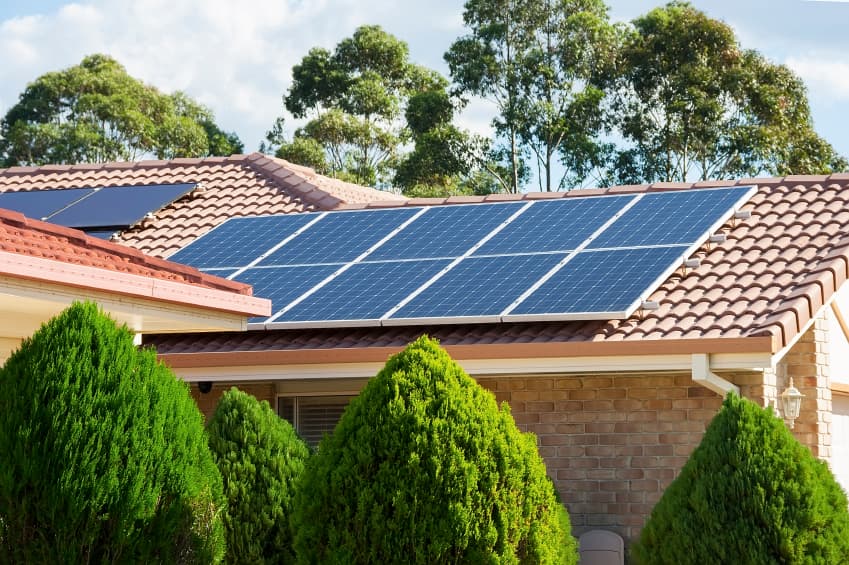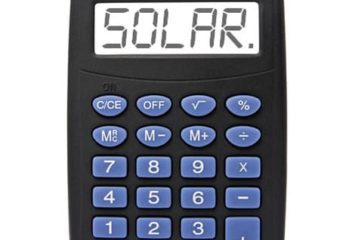How to Calculate Your Peak Sun-Hours
As energy costs continue to rise, more and more people are looking to solar power as a more efficient option for both their homes and businesses. On top of the economic benefits of solar power, solar energy produces no pollution and has no negative environmental effects, making it an attractive option for those concerned about the environmental effects of traditional energy production as well.
If you are trying to determine the cost of solar energy for your home, it’s important to understand how much sun solar panels need in order to operate effectively, what peak sun-hours are, and what you can do to get the most out of the solar power available to you.
Get a free solar quote
Get a quote today by calling the number below or let us get in-touch with you by filling out the form below.
How Much Sun Do Solar Panels Need?
Solar power is created through the harnessing of energy from the sun. Solar panels — which are typically made of crystalline silicon and use a system of lenses or mirrors to maximize the light that reaches them — create an electric current when exposed to sunlight, which is then used to produce electricity.
Solar panels need direct sunlight in order to produce the maximum solar output. Even in cloudy weather, however, solar panels can absorb solar energy to produce power, though it will be at a significantly reduced rate compared to sunny days — usually between 25 and 40%.
To maximize the amount of sunlight your panels receive, they should face south and be installed in an area where they will not be shaded by trees or other nearby buildings during the majority of daylight hours. While a solar professional can help you determine the best placement for your panels, you can plot a sun chart or buy or rent a solar pathfinder to determine how much sun your solar panels are likely to receive on a typical day.
What Are Peak Sun-Hours?
While the amount of sunlight your panels receive is important, a more accurate representation of the amount of energy your panels can produce is peak sun-hours. It is important, first of all, to note that “peak sun-hours” are not the same as “hours of daylight.” Peak sun-hours refers specifically to how much sun exposure is usable for efficient energy production in an area during a typical day. A peak sun-hour, specifically, is an hour during which the intensity of sunlight is 1,000 watts per square meter.
The amount of solar radiation, or insolation, delivered by the sun varies throughout the day, based on the sun’s position in the sky, clouds, and other atmospheric conditions.
- Time of Day: Peak solar radiation occurs at solar noon, when the sun is highest in the sky. The low angle of the sun at sunrise and sunset means that the atmosphere filters the sunlight more and results in less energy being delivered to the earth’s surface.
- Season: Sun-hours increase during the summer due to the sun’s higher position in the sky.
- Geography: Solar energy increases near the equator, as it is closer to the sun.
While your panels may receive an average 7 hours of daylight per day, the average peak sun-hours may actually be closer to 3 or 4. Weather is also a factor. States like California or Florida can expect more clear and sunny days.
How to Calculate Your Peak Sun-Hours
Most of the United States averages between 3 and 5 peak sun-hours, though many areas may experience less during the winter and more during the summer. Knowing the yearly and seasonal average peak sun-hours in your area is a helpful tool for deciding whether or not solar panels are a worthwhile investment for your home or business.
An insolation map can show you the amount of solar energy your location receives on an average day during the worst month of the year. Several charts and lists have compiled more specific data for North America, including monthly and seasonal averages, that you can use to determine the average number of peak sun-hours your panels are likely to receive.
If you want to calculate the exact amount of insolation that your solar panels will receive, you can purchase an insolation meter or make your own. Put the meter in direct sunlight and wait for a reading. It will give you facts regarding temperature, solar power supply, and current light intensity.
Once you know the average peak sun-hours for your area, you can determine whether or not solar panels are a good investment for your home. Use a cost calculator to find out how much you could save by switching to solar.



2 Comments
“Geography: Solar energy increases near the equator, as it is closer to the sun.”
Please think about rephrasing this sentence. I would insert the word “angle” and consider removing the word “closer”
Great write-up, I am regular visitor of one¡¦s blog, maintain up the excellent operate, and It’s going to be a regular visitor for a lengthy time.